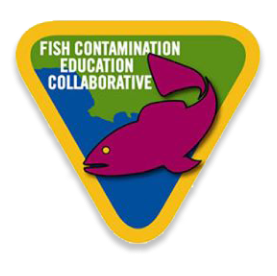Aloha To Two Great FCEC Project Managers
Americans have come to use the Hawaiian, “Aloha,” as a word to mean both hello and goodbye. It’s a pleasant, if not an entirely accurate, translation. It’s also very fitting for us at this moment as we say Aloha to both Judy Huang and Carmen White, FCEC’s incoming and outgoing Project Managers.
For the last year, Carmen White has provided our group with remarkable leadership in broadening FCEC’s educational and community outreach. We offer her all our gratitude for her efforts.
As we wish Carmen farewell, we are pleased to welcome Judy Huang to her new role. We sat down with FCEC’s new Project Manager to ask her what she sees for the future of the group.
 FCEC: Hi Judy, can you share a little of your background with us?
FCEC: Hi Judy, can you share a little of your background with us?
Judy Huang: While I have a lot of work and educational experience with environmental science—I graduated with a degree in chemical engineering from UC Berkley—I also recognize the importance of engaging and activating communities through outreach.
Like Carmen before me, I’m coming from the EPA. I’ve been with their superfund division for 6 years. Prior to that, I had worked for the San Francisco Bay Regional Water Quality Control Board for 13 years where I worked on sites addressing a variety of topics including: waste water treatment plant discharge, stormwater permitting, wetland restoration and superfund site cleanup.
FCEC: What other superfund sites have you worked on and what do they share in common with the Palos Verdes Shelf Superfund Site?
Judy Huang: I was the Formerly Used Defense Site (FUDS) Regional Coordinator, so a lot of them have been things like closed military facilities. Interestingly, the work I did with Fort Ord, to address the cleanup of munitions, earned the distinction of being the first privatized cleanup on a military base.
I’ve done a lot of work on sites in Hawaii that have a lot issues in common with PV Shelf. The Pearl Harbor Naval Air Station and the Del Monte Oahu Plantation both dealt with pesticide cleanups stemming from soil, sediments and groundwater contamination.
While not a superfund site, an offshore munitions study site in Hawaii called Ordinance Reef examined the impact of munitions to human health in the environment. Similar to the PV Shelf consumption study, we had to determine if the seafood was safe to eat. The study looks at how the population prepares their food, and where they caught their fish. The best part of the site was working with the community. Unlike the PV Shelf, everyone in the community could actually see the munitions in the water when they went diving, so everyone was very engaged and aware.
FCEC: What are you looking forward to most about working with the Fish Contamination Education Collaborative on the PV Shelf Project?
Judy Huang: I’m looking forward to learning from the project! First there is the learning opportunity dealing with the technical challenge with the underwater cap. But I’m also looking forward to learning from community outreach. It’s a large component and challenging to implement and enforce. It’s unlike other superfund sites, in that respect.
FCEC: What are your thoughts on the current FCEC outreach efforts and program as a whole?
Judy Huang: PV Shelf is one fast moving project. Based on the Partners meeting we had, I’m impressed with how many people FCEC managed to reach. It’s been impressive to see how excited partners are, and how much pride and ownership they have towards their role in the project.

